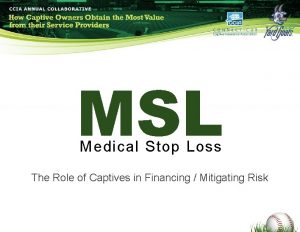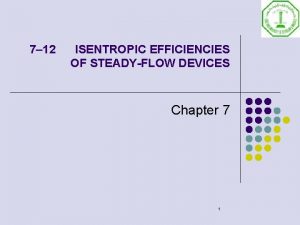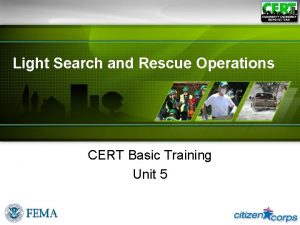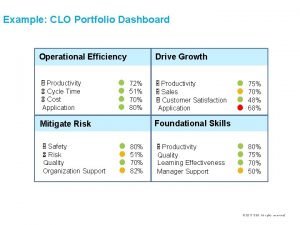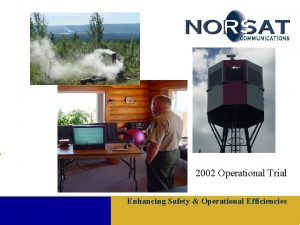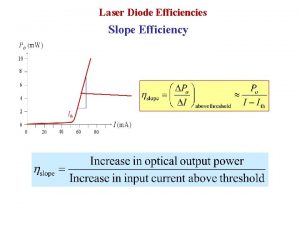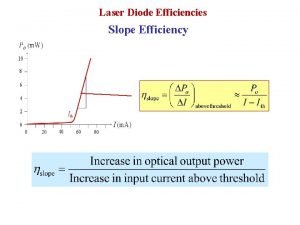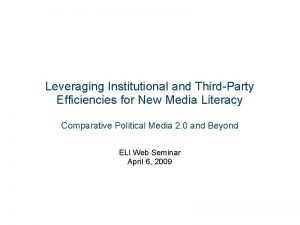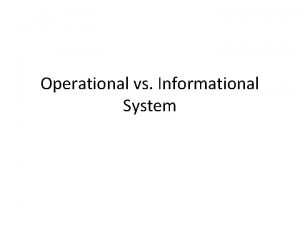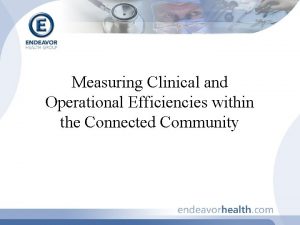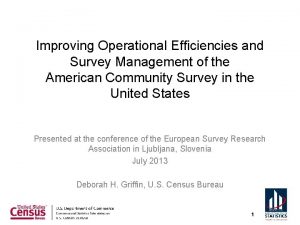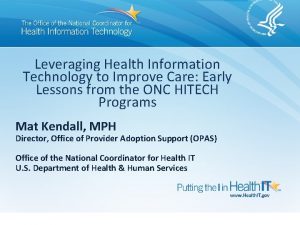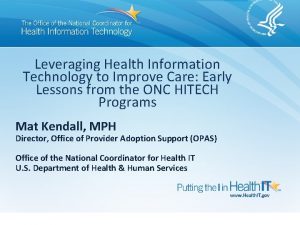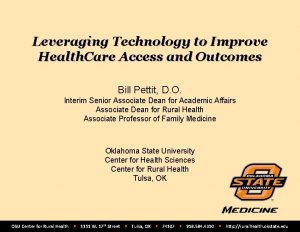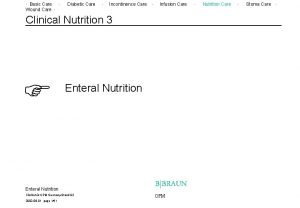Leveraging AI to Improve Operational Efficiencies Improve Care





























- Slides: 29

Leveraging AI to Improve Operational Efficiencies, Improve Care, and Create Healthy Communities The AI Summit, San Francisco September 28, 2017 KEITH KIRKPATRICK Principal Analyst

Introduction Tractica is a market intelligence firm that focuses on human interaction with technology. The firm’s market research and consulting services provide industry participants and stakeholders with in-depth analysis of emerging technology trends, business issues, market drivers, and end-user demand dynamics across multiple application domains. Sector Focus Research Services • • • Artificial Intelligence Robotics User Interface Technologies Wearable Devices Digital Health Copyright © 2017 Tractica Research Reports Research Subscriptions Analyst Inquiry Sessions Consulting Projects Go-to-Market Services End-User Surveys 2

Artificial Intelligence TOPICS COVERED • • • Cognitive Computing Computer Vision Deep Learning Machine Reasoning • • • Natural Language Processing Predictive Computing Virtual Digital Assistants RESEARCH REPORT SCHEDULE 2 Q 16 3 Q 16 4 Q 16 1 Q 17 2 Q 17 3 Q 17 3 Q 17 4 Q 17 Computer Vision Technologies and Markets Virtual Digital Assistants Artificial Intelligence for Enterprise Applications Video Analytics Blockchain for Enterprise Applications Deep Learning Chipsets Artificial Intelligence Market Forecasts Artificial Intelligence for Automotive Applications Deep Learning Robotic Process Automation Natural Language Processing Artificial Intelligence Use Cases Artificial Intelligence for Consumer Applications Artificial Intelligence Hardware Artificial Intelligence for Healthcare Applications Virtual Assistants for Enterprise Applications Copyright © 2017 Tractica 4 Q 17 1 Q 18 2 Q 18 3 Q 18 4 Q 18 Artificial Intelligence for Enterprise Applications Computer Vision Technologies and Markets Artificial Intelligence Market Forecasts Artificial Intelligence Services Artificial Intelligence for Telecommunications Applications Artificial Intelligence Market Ecosystem Blockchain for Enterprise Applications Deep Learning Chipsets Artificial Intelligence Market Forecasts Machine Reasoning Deep Learning Emotion Recognition and Sentiment Analysis Artificial Intelligence for Media and Advertising Applications Artificial Intelligence for Enterprise Applications Virtual Digital Assistants 3

The Digital Health Revolution Copyright © 2014 Tractica 4

AI Advances in the past 18 months AI can now outperform humans in many ways. Alpha. Go beats human champion at the game Go Because of the huge number of potential moves that can be made, Alpha. Go had to master the game by learning on millions of training samples from real games. In March 2016, Alpha. Go faced off with Lee Sedol, the world champion, and beat Sedol in four out of five games. UNU predicts the Kentucky Derby Unanimous A. I. created a “swarm, ” a real-time online tool called UNU, that brought together handicappers and racing experts, to generate consensus picks for the race. In May 2016, UNU was able to successfully predict the superfecta—the top four horses, in exact order—at the Kentucky Derby, beating 540 -1 odds. AI predicts U. S. election Copyright © 2017 Tractica An Indian startup in Mumbai called Mog. AI analyzed social media sentiment across 20 million social media data points. Mog. AI predicted a Trump win, tapping into true voter preferences in a way that traditional polling did not. 5

AI has Become Commonplace, Even if It’s Not Identified as “Artificial Intelligence” Social Personal Travel Copyright © 2017 Tractica AI Enterprise Automotive 6

Digital Healthcare is a Perfect Match for Artificial Intelligence § § § Data has become ubiquitous, in healthcare and beyond § Many of the administrative tasks in healthcare can be automated and made ‘intelligent, ’ in order to reduce errors and increase efficiency Healthcare costs are continuing to increase Trend in reimbursement is to focus on outcomes, which relies on selecting the best possible treatments and care plans …AI can provide more efficiency by processing more data, identifying patterns in that data, and, in many cases, finding solutions that are not immediately apparent through traditional, human-led data analysis. Copyright © 2017 Tractica 7

Healthcare Wearables are Gaining Traction Healthcare wearables will reach nearly 100 million unit shipments by 2021, representing a compound annual growth rate (CAGR) of 114% between 2015 and 2021, reflecting consumer and provider demand for more health data. Healthcare Wearable Device Shipments and Revenue, World Markets: 2015 -2021 (Source: Tractica) Copyright © 2017 Tractica 8

EHR Adoption is Approaching Ubiquity Over the past decade, EHR adoption has skyrocketed, yielding a wealth of healthcare data for providers and payers. (Source: The Office of the National Coordinator for Health Information Technology/ American Hospital Association (AHA), AHA Annual Survey Information Technology Supplement) Copyright © 2017 Tractica 9

Use Case Market Forecasts Copyright © 2014 Tractica 10

Forecast Model Methodology AI Revenue Estimating the Software Revenue Quotient of AI* *Not the revenue enabled by AI Copyright © 2017 Tractica Indirect Revenue Penetration rates, geo segmentations, S-curves, scale adjustments applied Metrics Identified for each use case (dollar or units) Bottom Up Model Direct Revenue Factor Applied Use Cases segmented by industry (29 industries), sub-industry, technology, adoption timeline Artificial Intelligence Use Cases (154 Use Cases) 11

Total Healthcare AI Software Revenue Healthcare Artificial Intelligence Software Revenue, World Markets: 2016 -2025 (Source: Tractica) Worldwide healthcare AI software revenue will grow from $49. 5 million 2016 to $5. 6 billion by 2025, representing a CAGR of 69%. Copyright © 2017 Tractica 12

Top Use Cases Artificial Intelligence Revenue, Top Healthcare Use Cases, World Markets: 2016 -2025 $ 1 600 $ 1 400 § By 2025, 72% ($4 billion) of the total software revenue will be generated by the top 5 use cases. § Potential for significant revenue is there -- 10 use cases will reach more than $100 million in total annual revenue § The growth is coming, but not until early next decade $ 1 200 $ 1 000 $ 800 $ 600 $ 400 $ 200 $2016 2017 2018 2019 2020 2021 2022 2023 2024 2025 Medical image analysis ($ Millions) Virtual assistants for patients ($ Millions) Patient data processing ($ Millions) Computational drug discovery ($ Millions) (Source: Tractica) Copyright © 2017 Tractica 13

Use Case: Medical Image Analysis Medical images like magnetic resonance imaging (MRIs), X-rays, computed tomography (CT) scans, and other diagnostic images are essential to better understanding and diagnosing a wide range of conditions. § More speed, precision, and predictive capabilities results in better outcomes § Key AI technologies: Deep Learning and Computer Vision § Current uses: autograding of eye diseases, detection and segmentation of radiology images. Healthcare Artificial Intelligence Software Revenue for Medical Image Analysis by Region, World Markets: 2016 -2025 (Source: Tractica) Tractica forecasts that the annual revenue for medical image analysis in healthcare will increase from $0. 07 million worldwide in 2016 to $1. 5 billion in 2025. Copyright © 2017 Tractica 14

Medical Imaging: Examples Enlitic uses DL networks that analyze medical imaging data, such as X-rays and MRIs to identify even the smallest suspicious clues (e. g. , tumors, hairline fractures, spots, etc. ) • • • First clinical deployment – wrist fractures • 20% efficiency in terms of workflow • 10% improvement in accuracy Now focused on chest scans - 50% greater accuracy than a panel of four radiologists in determining the nature of a disease in the lung Working to expand functionality to include focus on breast, thyroid, prostate and liver cancer Copyright © 2017 Tractica 3 Scan is a biotechnology company focused on digitizing human tissue samples. § A KESM (Knife Edge Scanning Microscope) sections and images samples at up to 3, 600 slices per hour at a submicron resolution. § Massive increase in information: the KESM can take and analyze more than 1, 500 sections through the entire tumor. More data=better information! § AI reads images and deploys an algorithm to understand identify the anatomical structures, and then presents the data to a pathologist in a comprehensive report, saving time and increasing accuracy 15

Use Case: Virtual Assistants for Patients Patient-physician relationships are strained. § Cost and labor constrains limit the time providers can spend with patients. § Consumers have become familiar and comfortable with interacting with virtual assistants § AI can be trained to handle multiple administrative tasks § Virtual assistants are not likely to replace human doctors, but can scale their ability to provide guidance § Virtual assistants can be used to address any number of conditions and can be tied into existing smartphone, tablet, or existing virtual assistant devices Healthcare Artificial Intelligence Software Revenue for Virtual Assistants for Patients, by Region, World Markets: 2016 -2025 (Source: Tractica) Tractica forecasts that the annual revenue for virtual assistants for patients in healthcare will increase from $13. 33 million worldwide in 2016 to $1. 244 billion in 2025. Copyright © 2017 Tractica 16

Virtual Assistants for Patients: Examples Ada offers a mobile app-based virtual assistant that uses ML, NLP, and image recognition to support patients’ understanding of symptoms. § Patients interact with it like a nurse or other clinical worker, answering questions in conversational language Lark is an AI nurse focused on helping patients suffering from chronic disease or at high risk of chronic disease. The goal is to help patients manage, reverse, and prevent their disease from progressing. § A digital interactive nurse and motivational coach driven by AI § The AI engine is trained on incorporating both current patient health data, existing patient data, and longitudinal patient health data § Integrated with Amazon Alexa § Can capture details doctors don’t ask or patients forget to mention in person § The app has diagnosed both common and rare conditions, and since its continuous training includes real human doctors, it pools shared expertise. § Lark can reach out non-acute patients, something that traditional care providers don’t have the time or resources to do. Goal is to save time and money, and provide better care to patients with a streamlined interface § Focuses on wellness, diabetes, hypertension § Copyright © 2017 Tractica 17

Use Case: Patient Data Processing Unstructured and non-standardized patient data is a key opportunity for AI. § Patient data processing will make use of both ML and DL in combination with NLP § Current focus is on improving fraud detection, claims processing, scanning (analog or digital) patient records, marketing, behavioral analysis, and preventive insurance. § Longer-term applications for DL and patient data involve using diverse data sets for medical research, drug and treatment development, and preventative care. Healthcare Artificial Intelligence Software Revenue for Patient Data Processing, by Region, World Markets: 2016 -2025 (Source: Tractica) Tractica forecasts that the annual revenue for patient data processing in healthcare will increase from $9. 74 million worldwide in 2017 to $465. 14 million in 2025. Copyright © 2017 Tractica 18

Patient Data Processing Examples Konica Minolta’s Value-Based Care Platform is designed to turn structured and unstructured patient data into predictive and highly personalized insights in real time. § § Uses intelligent digital data extraction technology, NLP, and ML to help providers better predict and manage patient risks for improved clinical and financial outcomes at lower cost. A variety of relevant data points, covering the patient’s clinical, financial, and socioeconomic data can be extracted from various sources, regardless of data structure or clinic location (EMR or HIT systems or paper). Copyright © 2017 Tractica Sy. True uses NLP and ML to support patient data processing. § Integrates disparate sources of information to produce a comprehensive and “deep-dive” view of patient groups in physician practices, hospitals, and other healthcare institutions. § Incorporates semantic rules engine to address the myriad coding schemes currently used by participants in the U. S. healthcare system, extracting data in context. 19

Use Case: Computational Drug Discovery AI offers new ways for researchers to conduct drug discovery: • Leverage existing databases • Develop new databases involving bigger and more diverse data • Predict how molecules will behave and how likely they are to make a useful drug • Organizations can save time and money on unnecessary tests • DL can find patterns in sparse pathology data combined with large genomic data sets. Healthcare Artificial Intelligence Software Revenue for Computational Drug Discovery, by Region, World Markets: 2016 -2025 (Source: Tractica) Tractica forecasts that the annual revenue for computational drug discovery in healthcare will increase from $3. 91 million worldwide in 2016 to $448. 2 million in 2025. Copyright © 2017 Tractica 20

Computational Drug Discovery Examples Glaxo. Smith. Kline (GSK) recently announced a $43 million partnership with Exscientia to search for drug candidates for up to 10 disease-related targets. Atomwise recently partnered with drug giant Merck and published first findings of Ebola treatment drugs last year. Benevolent. AI is a British company focused on developing better drugs to target diseases of inflammation and neurodegeneration, and rare cancers. Copyright © 2017 Tractica 21

Use Case: Converting Paperwork into Digital Data § AI can significantly reduce administrative tasks § NLP, ML, DL, and even bots can be applied in these contexts to capture paper documents and automate paperwork processing § § Data entry § Filling in forms § Invoicing § Automating reports Paper-based medical charts and clinical notes can be captured and classified, providing further information and insight Healthcare Artificial Intelligence Software Revenue for Converting Paperwork into Digital Data, by Region, World Markets: 2016 -2025 (Source: Tractica) Tractica forecasts that the annual revenue for converting paperwork into digital assets in healthcare will increase from $5. 39 million worldwide in 2016 to $334. 71 million in 2025. Copyright © 2017 Tractica 22

Converting Paperwork into Digital Data: Examples Nuance works to help reduce the time it takes to document medical interactions, driven by its natural language software and DL technology. § § § Its Computer Assisted Physician Documentation (CAPD) uses AI to provide clinical documentation guidance within doctor workflows. Offers recommendations to speed up input and uses integrations to process reimbursements, compliance documentation, and other routine tasks, speeding interactions by 45% It also offers a Computer-Assisted Clinical Documentation Improvement (CACDI) solution to analyze clinical information, and identifies areas that may require further clarification to accurately capture the severity or nuance of patients’ issues Copyright © 2017 Tractica Hindsait has developed its own natural language processing technology to capture and categorized data culled from unstructured clinical notes, including faxed charts and EMRs. § Used to mine and analyze data to uncover hidden trends and connections that humans are likely to overlook. § Hindsait provides a ML platform for: § Payment issues (pre-authorizations) § Claims processing Looks for anomalies or patterns that can impact organizational efficiency. 23

Use Case: Medical Diagnosis Medical diagnostics accounts for billions in spending every year § AI for medical diagnostics can enhance doctors’ speed, accuracy, and preventative strategies, § At least 80% of cancers could be effectively treated if detected earlier. § NLP and DL can analyze medical records and images, and detect patterns and abstractions across: § Symptom-disease associations § Patient types § Geographies § Environments § Socioeconomic status Healthcare Artificial Intelligence Software Revenue for Medical Diagnosis by Region, World Markets: 2016 -2025 (Source: Tractica) Tractica forecasts that the annual revenue for medical diagnostic assistance in healthcare will increase from $3. 6 million worldwide in 2016 to $180. 58 million in 2025. Copyright © 2017 Tractica 24

Medical Diagnosis: Examples Heart Failure Detection Early Cancer Detection Identifying At-Risk Patients Acute Kidney Injury Detection Low-Acuity Patient Symptom Diagnosis Copyright © 2017 Tractica 25

Use Case: Hospital Patient Management Systems AI can make hospital patient management more efficient, by automating certain workflows and enforcing best practices, using supervised and unsupervised learning algorithms. § AI-driven patient management systems can analyze EHR systems, financial, and insurance data: § Predict outcomes of specific treatment or surgical procedures based on past contexts § Automatically resurface groups of similar patient procedures and recommend specific clinical pathways at the lowest costs for local patients. § Monitor adoption and adherence with standardized clinical pathways and identify new trends Healthcare Artificial Intelligence Software Revenue for Hospital Patient Management Systems, by Region, World Markets: 2016 -2025 (Source: Tractica) Tractica forecasts that the annual revenue for hospital patient management systems in healthcare will increase from $1. 62 million worldwide in 2016 to $147. 19 million in 2025. Copyright © 2017 Tractica 26

Hospital Patient Management Systems: Active Companies Copyright © 2017 Tractica 27

Key Takeaways § § The stars are aligned: patients, physicians, and payers have all embraced data § Cost and inefficiency is not being tolerated any longer in healthcare § § Huge datasets are tailor-made for AI AI presents great promise, but lives are at stake § § § Vendors and users are embracing AI Barriers to adoption will decline as the new generation enters the workforce Now: Proof-of-concept and trials 2020 and Beyond: Rapid integration and adoption of AI in healthcare Copyright © 2017 Tractica 28

Contact Us 1111 Pearl Street, Suite 201 Boulder, CO 80302 USA +1. 303. 248. 3000 www. tractica. com Yalan Lai Healthcare Investment Konica Minolta ylai@kmbs. konicaminolta. us
 Captive reinsurance for stop loss
Captive reinsurance for stop loss Ecological efficiencies
Ecological efficiencies Isentropic efficiency of pump
Isentropic efficiency of pump Primary secondary and tertiary care
Primary secondary and tertiary care Secondary brand associations examples
Secondary brand associations examples Analyzing and leveraging decoupled l1 caches in gpus
Analyzing and leveraging decoupled l1 caches in gpus Line extension vs brand extension
Line extension vs brand extension Search by image
Search by image Leverage secondary brand associations
Leverage secondary brand associations Louisiana leveraging educational assistance partnership
Louisiana leveraging educational assistance partnership Leveraging social media for talent acquisition
Leveraging social media for talent acquisition Coso three lines of defense
Coso three lines of defense Leveraging network effects
Leveraging network effects Leveraging threat intelligence
Leveraging threat intelligence Ingredient branding examples
Ingredient branding examples Leveraging coso across the three lines of defense
Leveraging coso across the three lines of defense Performance ambiguity lowers the cost of control.
Performance ambiguity lowers the cost of control. The strategy of international business chapter 13
The strategy of international business chapter 13 Palliative care vs hospice care
Palliative care vs hospice care Hip fracture clinical care standard
Hip fracture clinical care standard Animalele se pot inmulti prin
Animalele se pot inmulti prin Unit 2 equality diversity and rights
Unit 2 equality diversity and rights Standard 3 duty of care
Standard 3 duty of care Care sunt simturile prin care sunt evocate
Care sunt simturile prin care sunt evocate Magnetul este corpul care are proprietatea de a atrage
Magnetul este corpul care are proprietatea de a atrage Care certificate answers standard 3
Care certificate answers standard 3 Social protection operational framework philippines
Social protection operational framework philippines Operational relatedness is created by
Operational relatedness is created by Hapara student dashboard
Hapara student dashboard Operational research
Operational research
